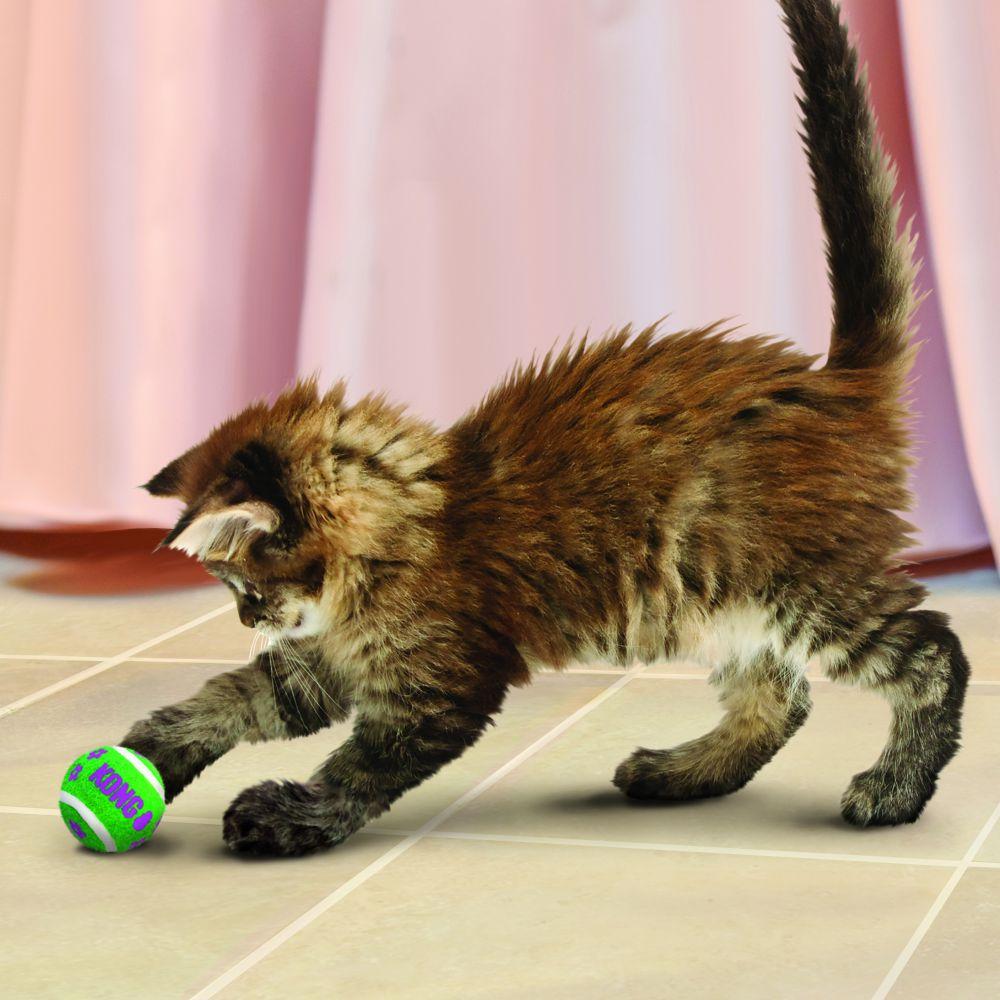Getting a new kitten is a happy and exciting occasion. A sweet, purring ball of fur brings you happiness and companionship. If you already have a cat at home, introductions will have to be made.
This is the event you want to prepare carefully for. You will want this introduction to be successful and your new kitten and current cat to get along, forming an adorable fluffy family.
Preparing For a New Kitten
Getting a pet is a big decision, personally and financially. The investment is a great one; their love and company make them a special part of your family. When bringing a new kitten home, you want to prepare a space for them as they transition to a new home. This space will also help prepare for a successful introduction to your current cat.
Moving to a new home and away from the warmth and comfort of their mother is a big change for your kitten. Help this transition by having a soft object, like a blanket or stuffed animal that can comfort your new kitten. If possible, you can use a comfy item that smells of the kitten’s mother.
Warm, comforting objects can help make moving to a new place a little easier. Beyond the cuddling, the scent of their mother and litter will help keep them calm.
Preparing a space for your new kitten in your home is essential for two big reasons. First, this gives your new kitten a space to feel comfortable and start to become familiar with their new pad. Second, having a location devoted to your kitten keeps them separated from your current cat until each step of the introduction process can be completed.
Cats can be territorial, and we don’t want our older cats to feel that their territory is being intruded upon by the kitten. This can cause aggressive behaviors which we want to avoid.
Kitten’s Personal Space
When bringing your kitten home, having a prepared space is important. In this area, you should have a spot for their food and water, a spot for sleeping, and a spot for using the bathroom. It should be a nice, quiet space to allow your kitten plenty of time to sniff around and get used to their new surroundings. Do not worry about giving your kitten their own personal tour of their new house. They will learn it as the time comes.
In the space for sleeping, you can place the soft object with their mothers and/or littermates scent. This will be a comfort for your kitten and give them a comfy place to relax and sleep. You can use a carrier for a sleeping space, which will also help your kitten get used to a carrier when taking to the veterinarian or traveling in the future.
Clean, fresh water should be accessible at all times. Water and food dishes can be placed close to your kitten’s sleeping space, but their litter box should be in a spot that is placed away from their bowls and sleeping area.
For now, your kitten’s litter box should be short enough that your kitten can easily climb in. If the box is too deep, the kitten will have difficulty climbing in and out and may instead choose to eliminate on the floor.
For continued success using the litter box, find out which type of litter was being used at their previous home. Try to continue using that same type; cats are creatures of habit.
Swapping Scents
Your longer residing cat definitely knows that there is a new member of the household. They can smell the new kitten on you, and they have likely figured out which room the kitten is occupying.
To start the introduction process, swapping scents is the first step in successfully introducing your kitten and cat to each other. Take an object out of the kitten’s room and allow your cat to smell and interact with the object. Cats have an extraordinary sense of smell and can gather a wide breadth of information from scents. Likewise, take an object that belongs to your older cat, and place that in the kitten’s space.
Keep a careful watch on how your kitten and cat react to each other’s scents. You want each pet to be calm and comfortable when in the presence of the other’s scent. This may take a few days, but being patient with each part of the process will allow for a more successful introduction. Watch for body language like hissing to ensure the process is positive and safe.
Trading Spaces
After a few days of swapping scents, you are ready for the next step in the introduction process. Trading spaces allows each pet to explore each other’s area and leave their own scent.
Make sure that each cat is confined in a separate area of the home, as we do not want them to interact with each other just yet. Again, keep a close watch on your cat and kitten during this next step.
We want to ensure that each other is calm in the presence of another cat’s scent. You can hide morsels of favorite treats when each pet is exploring the other’s area. This will help to create positive associations with the other cat’s scent.
First Sight
Now that your kitten and cat are familiar with each other’s areas and scents, the next step is to allow visual contact with each other. Adding tasty treats to the mix can help reinforce the idea that seeing each other is a good thing and will continue the positive association with the other’s company.
This first sight should be divided by a physical barrier. This can be done with a screen or crate. A screen can be fitted between a door to allow your pets to see each other but remain separate. You can also use a baby gate, but be very careful as your older cat could easily climb or jump over this gate. Higher baby gates or other make-shift, temporary fencing can prevent this from occurring.
If using a crate to contain your kitten, offer a way for your kitten to hide from the cat if they become anxious. A cardboard box with a blanket draped over the opening is a great hideaway for your kitten if this first sighting makes them feel shy. It’s no secret that cats love boxes, but they might love specially-crafted cat dens even more.
Keep this first sighting encounter brief, and end it if you sense any negative behaviors occurring. It may take more than one of these sessions for your cats to visually interact with each other before they are calm. Keep giving treats or playing with toys during this time, as we want the experience to be as positive as possible.
Face to Face Introductions
Once your kitten and cat are calm in each other’s company, it is time for a true face-to-face introduction, without a barrier.
Try not to make a big show of removing the barrier. Just leave the door open with no screen or leave the crate’s door open. If you are concerned about either pet being aggressive, you can leash your cat and kitten for easy separation.
Keep the interaction positive, with lots of praise and treats. Be on the lookout for signs of stress in both your kitten and cat and separate from each other if you see these signs.
For the next few weeks, do not allow your cat and kitten to be in each other’s physical space without supervision. Once you see that each cat is calm in each other’s company, you can start to leave them unsupervised and gradually increase the amount of time left unsupervised.
Coexisting Peacefully
Even with all the preparations and research, your cat may not want to be a part of the welcoming committee when you bring your new kitten into the home. Your new kitten and cat may take time to get used to each other. Even then, they may not enjoy a warm, cuddy relationship. At this point, the goal would be for your cat and kitten to coexist peacefully in your home.
Once your kitten has free reign of the home, be sure to keep separate spots for sleeping, eating, drinking, and eliminating waste for each of your cats. This will ensure that neither cat feels that their space is being encroached. Offer plenty of opportunities for physical and mental stimulation, like scratching posts, cat toys, and cat perches. This will keep each cat busy and happy.
If you see that your older cat is showing signs of being anxious, it could be due to this new change in the home. There are several ways to help relieve this anxiety in your older cat, as we want them to continue feeling comfortable in their home.
During the entire introduction process, shower your older cat with some extra love and affection. If your older cat is feeling neglected, they may not feel particularly encouraged to welcome this newcomer.
Friends Furever
Of course, our ultimate wish is for our pets to be lifelong pals. The best-case scenario is they enjoy each other’s company for naps, play-time, and enjoying affection from you.
Some relationships can take time to build, and there may be roadblocks along the way. If you do have additional questions about the kitten to cat introduction process and the associated behaviors, chatting with one of the AskVet behaviorists in the KONG Club app can help you feel more prepared. You can also talk with other pet parents in the KONG Clubhouse to trade advice on introduction tips.
With some preparation and patience, your kitten and cat can become friends forever.
Sources:
A Cat’s Five Senses | Pet Talk – Texas A&M, CVMBS News



